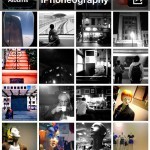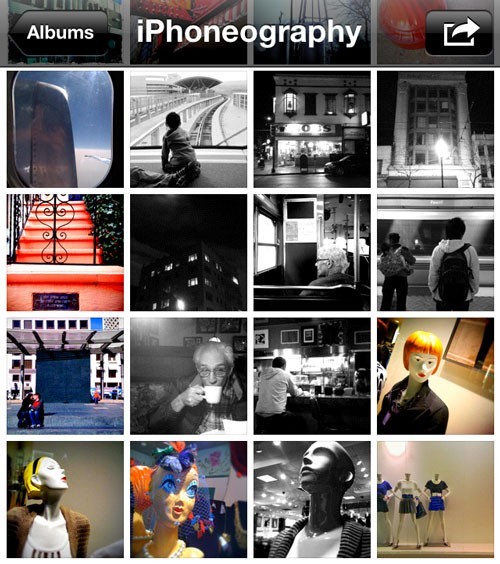 If you’re just discovering iPhoneography or photography in general, advice from someone with even just a little more time than you have can be a welcome gift. A lot of photographers over the years have given me guidance, either in person or through their writings. Each of them have helped me to discover my vision as a photographer or helped me better understand my tools.
If you’re just discovering iPhoneography or photography in general, advice from someone with even just a little more time than you have can be a welcome gift. A lot of photographers over the years have given me guidance, either in person or through their writings. Each of them have helped me to discover my vision as a photographer or helped me better understand my tools.
Although these tips are presented in the context of iPhoneography, they’re good advice for any novice photographers, as well as a reminder of the basics for those who’ve been shooting a while.
Here are some of the tips that I’ve learned or was given along the way. >>>
—-
Shoot. Shoot often. If you see a shot that you want and you drive past it, go back and get it.
No one has to see your photos but you. Mentally, this relieves you of the pressure that “every shot has to be art.” Release the good ones into the wild, if you want. By the way, when I started shooting again years ago, my signal-to-noise ratio (crap to good pics ratio) was really really high — probably over 100:1. It improves the more you shoot.
Learn your camera. Learn what it can do well and what it can’t do well. That’s trial and error and you won’t get some shots that you want while you’re learning (but don’t let that stop you). Soon, you’ll understand the iPhone’s limitations and its strengths and you’ll be able to shoot around the limitations — or use them to your advantage.
It’s easier to get a shot and delete it later than it is to not get it at all and wish you had.
The Rule of Thirds is a good place to start for interesting composition. You don’t always have to follow it, but the more you use it, the more you’ll recognize when to break it.
Look at others work and be inspired. Flickr groups, websites (check my blogroll) are all great places for inspirato.
Don’t be afraid to experiment. See “No one has to see your photos” above.
Take safety shots when you can. Take multiple shots. A shot that looks just okay on your iPhone may look fantastic when you look at it on a monitor.
Don’t delete anything until you’ve transferred it off your iPhone (except for things like foot shots where you accidentally set off the shutter). Learned this one the hard way.
Find your vision. Your styles are going to be all over the place at first. That’s not bad. Over time, focus your style so that it’s recognizably you. I made a list of the things I like to shoot, how I like to shoot and areas I’d like to grow into creatively. That serves as my roadmap.
One piece of advice adapted from typography (I’m a graphic designer), use fewer apps and know how to use them well rather than using many apps poorly. Like your camera, your apps are tools. Learn what they can do to help you create your vision.
The camera doesn’t make the picture. That’s the vision of the person using it. The camera is just a tool to help realize that vision.
Have fun!
—
These are just some random thoughts that have helped me over time. When you think you’re ready, share your work in the community — on Flickr, Facebook, Twitter. It’s a really friendly, approachable and giving community.
=M=
~~~~
Got any tips that have helped you in your iPhone photography? Share them in the comments below.

